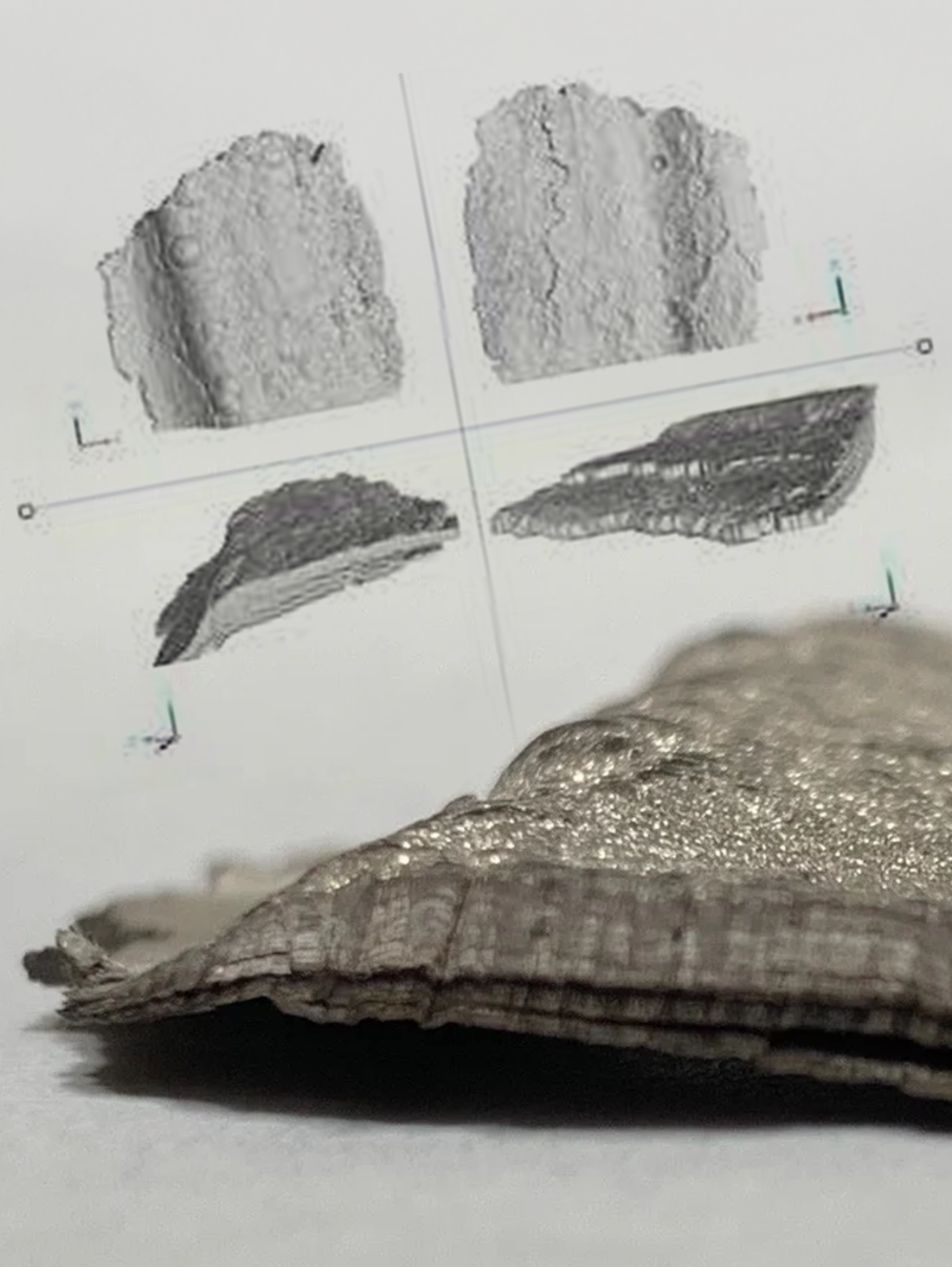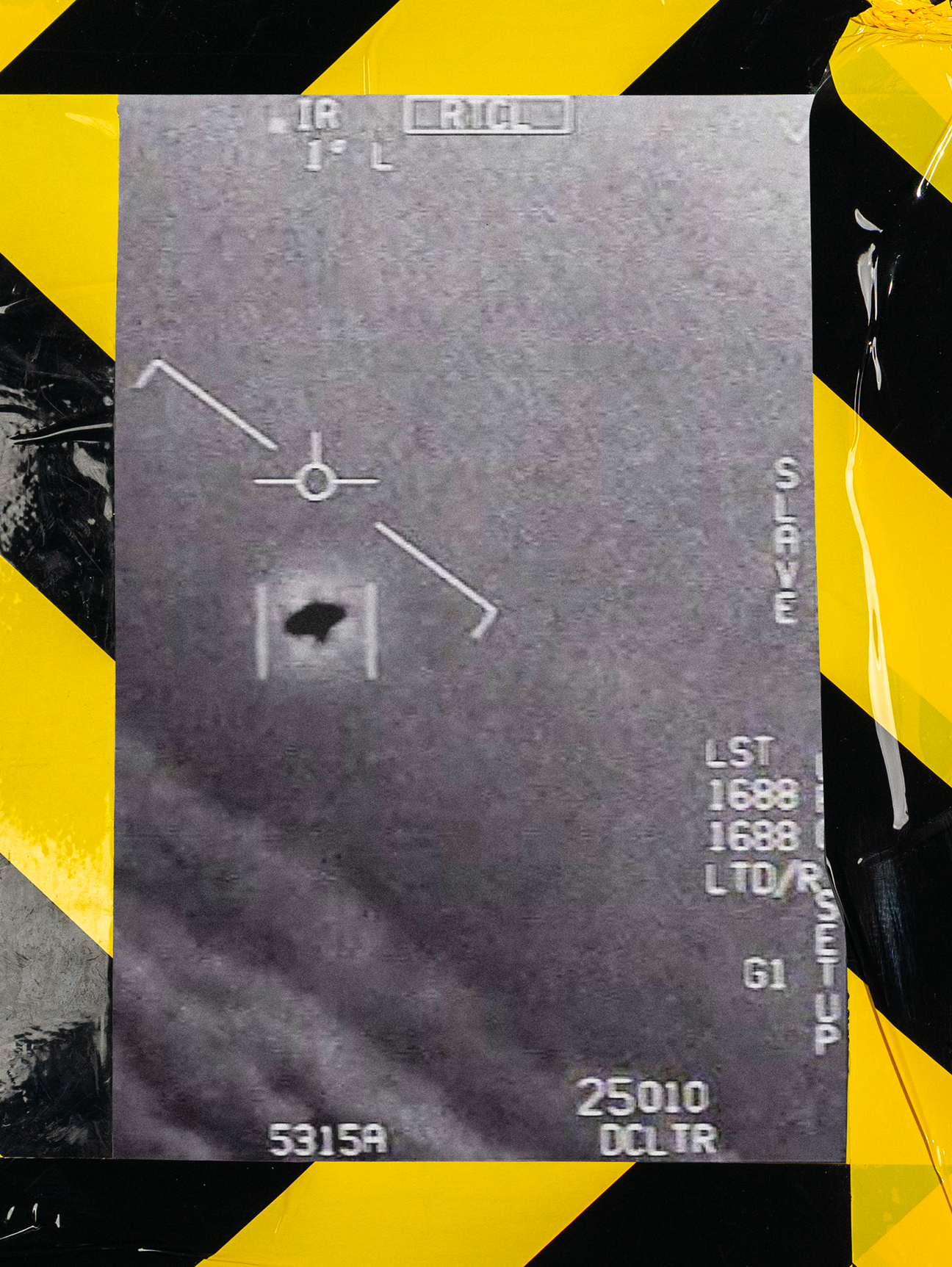
In the article below, senior TTSA adviser Christopher Mellon identifies numerous intelligence collection systems operated by the US government that could help unravel the vexing UAP phenomenon. Unfortunately, at the present time, neither the Department of Defense nor the US Intelligence Community are using these systems for that purpose.
The Navy has acknowledged the UAP phenomenon is real, and US fighter pilots are pleading for action out of concern for pilot safety and national security. As the reader will see, America possesses, even at an unclassified level, a massively capable intelligence apparatus. All that seems missing is the leadership willing to use it.
---
PURPOSE
In May 2019, a spokesman for the US Navy stated: "There have been a number of reports of unauthorized and/or unidentified aircraft entering various military-controlled ranges and designated air space in recent years…" While this historic admission is concerning, the US Navy’s public recognition of the problem is an excellent first step towards mobilizing the military and the Intelligence Community to find answers regarding the identify of these vehicles and determine whether they pose a threat to the United States.
Because this phenomenon has only recently been acknowledged, little if any effort has been made to use “national technical means” for purposes of identifying or tracking these objects. This is unfortunate since there are massive stores of intelligence data already collected by US intelligence systems that can be accessed and correlated with events such as the interaction of the USS Nimitz Carrier Battle Group with multiple UAPs in November 2004; or the ongoing events in restricted military airspace off the East Coast of the United States.
Regrettably, the Advanced Aerospace Threat Program (AATIP) was unable to obtain the cooperation required to access the systems and databases identified below due to bureaucratic intransigence. Therefore, to the best of my knowledge, these systems and databases represent potentially critical, unexamined sources of official information regarding the UAP phenomenon. Among other things, these vast repositories of data could yield crucial information on UAPs including: speed, acceleration, maneuverability, size, atmospheric effects, shape and possibly even their bases of origin.
Hopefully, the US officials charged with investigating the UAP phenomenon will receive the support needed to access and analyze data from these and other sources. Since billions have already been spent collecting the information, it seems wasteful and inappropriate not to allocate whatever modest sums may be required to help to resolve vital questions regarding the origin and capabilities of the unidentified vehicles that continue to violate US airspace with impunity.
A. Collection Systems
-
The Global Infrasound Acoustic Monitoring Network
This system is comprised of 60 stations operating in 35 countries that monitor low-frequency pressure waves in the atmosphere. Although built for the purpose of detecting nuclear explosions in support of the Comprehensive Test Ban Treaty, it reportedly also has the ability to detect and track bolides and other objects transiting the atmosphere. For example, US researchers have recently established that this system can monitor missile launches. There have long been rumors suggesting that environmental scientists participating in CIA’s experimental MEDEA program (an effort to determine if US intelligence systems could further the scientific understanding of climate change) detected anomalous objects entering earth’s atmosphere then maneuvering at high speeds. While this may be mere rumor, contact with the appropriate officials at LLNL who operate this system may help DoD determine whether this unique capability can contribute to the US government’s understanding of the UAP phenomenon.
-
The U.S. Space Surveillance Network consists of at least 29 distinct world-wide space surveillance systems, including the world’s most powerful radars, among them site C-6 at Eglin Air Force base, which can reportedly detect a basketball- sized object 22,000 miles away. Other components of this integrated system include the DARPA Space Surveillance Telescope (SST), capable of rapidly scanning large regions of space and monitoring distant and fast-moving objects such as asteroids. The SST holds the world record for distinct observations in a single year, logging 6.97 million observations in 2015. Other notable systems on the network, some of which are known to have acquired UAP data, include the ground-based optical GEODSS space surveillance system (which detects “uncorrelated targets”); the space-based Geosynchronous Space-Based Situational Awareness Program (GSSAP); and the Navy’s stunning sea-based X-band radar system. The Combined Space Operations Center (formerly the Joint Space Operations Center) at Vandenburg AFB, and the Space Control Center at Cheyenne Mountain, are both repositories of data from the US Space Surveillance Network that have the potential to provide fresh insights into the UAP phenomenon.
-
The Space-Based Infrared System (SBIRS) is a network of satellites in low-earth, highly-elliptical and geosynchronous orbits that together provide nearly continuous global coverage of infrared (heat) sources. Originally designed many decades ago to detect missile launches from the former Soviet Union and China, this highly sophisticated system continues to evolve and improve. Not only are the satellites improving in terms of reliability and resolution, but new algorithms and other techniques are improving the sophistication and ground-based exploitation of SBIR’s data. The USAF currently operates an “Overhead Persistent Infrared Battlespace Awareness Center” at Buckley AFB as well as a new “Data Utilization Lab.” Although UAPs generally seem to lack exhaust plumes or strong heat signatures, there are numerous reports in the open source literature claiming that the SBIRs system has recorded unidentified objects that entered earth's atmosphere but, unlike meteors, then maneuvered or changed direction. Regardless of the veracity of such reports, algorithmic searches of vast SBIR’s databases could provide new insights into the UAP phenomenon. To cite a simple example, no effort has been made to date even to see if there are correlations between launches at Chinese or Russian military facilities, or from Russian or Chinese ships, and the subsequent appearance of UAPs over US shores.
-
Active Electronically Scanned Array (AESA radars) In addition to the Navy’s Aegis radar systems, all military platforms outfitted with AESA radars are potentially valuable sources of information because they too, much like the Aegis system, are able to track low radar-cross section UAPS over large areas. The Navy’s new policy guidance concerning UAP encounters will cause more pilots of AESA equipped aircraft to pursue these vehicles in an effort to acquire and submit useful information. Retroactive analysis of AESA data is also feasible, although we don’t know how long this information is stored or how well it is indexed. Regardless, kudos to the U.S. Navy for issuing new guidance that will generate more reports to include more AESA radar tracking information.
-
Aegis We know from the Nimitz incident that the Navy’s Aegis radar systems are capable of tracking low radar cross-section UAPs that operate at extreme altitudes and velocities. Clearly, the power and precision of the Aegis system, now widely deployed in the fleet, makes it a potentially valuable source of information. For example, a review of the data from Aegis-equipped ships deployed off the East Coast during periods of frequent contact with UAPs could add important pieces to the analytical puzzle that needs to be assembled. Deploying Aegis-equipped ships to "hot spots" off the East could prove highly valuable.
However, some former USS Princeton crew members have openly stated that the Aegis radar data collected during the incidents in November 2004 was soon removed from the ship by individuals who arrived aboard the Princeton by helicopter shortly after the "Tic Tac" encounters occurred. That critical radar data still appears to be missing. Moreover, the deck logs of the USS Princeton for November 2004 are also strangely and inexplicably missing from the National Archives, raising the extraordinary possibility that some secretive USG component is working to conceal UAP incidents and information. The DoD and/or Intelligence oversight committees on Capitol Hill should seek an explanation for these strange occurrences, something easy for them to do. If there is an effort to suppress or conceal UAP data, then we have a situation in which, at a minimum, two USG entities are working at cross-purposes. Whether this is really occurring, and if so on whose authority, are issues that will need to be promptly resolved if DoD is to make serious progress in understanding the UAP phenomenon.
- The FAA’s long-range radar systems are tied into NORAD through the Joint Surveillance System. NORAD is privy to all of the data from the FAA sites and maintains that data for at least 10 years if not longer. This information was available from the 84th Radar Evaluation Squadron at Hill AFB in Utah until 2014. At that time the radar data storage and analysis activity was transferred to Langley AFB and the data was no longer available to the public. However that should pose no problem for USG officials.
B. Databases
-
NORAD maintains a database called the “Unknown Track Reporting Database” and/or “Unknown Track Reporting System” that is clearly pertinent to assessing the UAP phenomenon. To better understand the reporting process and the data it produces it is worth quoting from a NORAD reply to questions posed by the House Government Reform Committee in the wake of the terrorist attacks that occurred on September 11, 2001:
“Unknowns that cannot be identified are classified as “NORAD Remaining Unknown.” Unknown track reports are forwarded to the NORAD-USNORTHCOM Center for Aerospace Analysis, and new information that is discovered during these reviews is forwarded to CMOC and the Center for Aerospace Analysis.”
Note: There is reason to believe that names of the organizations above may have changed due to reorganization, but the functions are still performed.
According to additional Congressional testimony provided by NORAD, Unknown Track data is collated at a regional or sector level and also at a consolidated (i.e. NORAD HQ) level. The NORAD reporting contains detailed information on the behavior of “Unknown Tracks” and “NORAD Remaining Unknowns” including: date and time; detection sites involved; and whether combat aircraft were scrambled to engage detected targets. We know from the data provided by NORAD to Congress that even after a very thorough vetting of each unknown track there were still 1,966 unknown tracks from January of 1992 through October 2003. Notably, most NORAD air defense radars are not of the quality of Aegis or AESA system radars and are therefore unlikely to detect low radar cross-section vehicles such as the now famous “Tic Tac” vehicles encountered by the Nimitz battle group. In the Nimitz case the Navy’s conventional airborne E2-C Hawkeye air defense radar struggled to detect the Tic Tacs even at relatively close range and only managed sporadic radar contact. To be fair, it is also important to note that there are millions of flights tracked by NORAD every year, so the percentage of unknown tracks is very small, on the order of one-half of one percent. Reports prepared by NORAD’s Center for Aerospace Analysis are not routinely published or distributed within the US government but reportedly are available upon request.
-
Air Traffic Controllers (ATC) who staff the Federal Aviation Administration’s (FAA) airspace management sites (airports, alert centers, etc.) operate under a series of FAA Orders. These orders establish doctrine and the "Area Airspace Management System (AAMS)". On occasion, air traffic controllers at FAA sites coordinate with the USAF and NORAD when combat jets are scrambled to visually identify unknown objects causing NORAD alerts and “Unknown Tracks.” The FAA designates these object-generated radar hits as “Tracks of Interest”. The Aeronautical Data Team is responsible for the collection, validation and quality control of aeronautical information disseminated in support of National Airspace System (NAS) operations. Information provided includes a physical description; geographical position; and operational characteristics and status of all components of the NAS.
-
OPREP-3 Reports are an additional source of information distinct from NORAD aerospace defense reporting. This system is used by all branches of the military to report “urgent” and “ongoing” events to higher echelons. In the case of the USAF, OPREP-3 reports are sent to the Air Force Service Watch Cell (AFSWC) and the National Military Command Center (MNCC) among others. Two categories of OPREP-3 reports seem most likely to be pertinent to the UAP phenomenon, category 9B “Unauthorized Air Vehicle / Military Installation Airspace Violation/Intrusion” and 9F, “Vital Intelligence Sightings/ Intelligence Reports.”
There have been numerous instances over the years of UAP intrusions over military facilities, some which I can personally attest to or am aware of with one degree of separation. For example, in March of 1984, a close friend who was training to become a naval aviator called me excitedly from Pensacola NAS to relate an event involving a UAP flying circles around a USN aircraft in broad daylight over the base. Numerous incidents involving UAPs and military facilities have been reported by retired military personnel and validated via the FOIA process. These reports include verified UAP overflights of nuclear weapons and nuclear storage facilities. Consequently, a review of these cases might help shed important new light on the question of reported UAP interest in the US strategic triad and nuclear chain of command (Note: I have not listed undersea monitoring capabilities due to classification issues although they are obviously highly pertinent to this question).
Other Potential Opportunities
Allies: The UAP phenomenon off the East Coast of the US in recent years is unprecedented in terms of the number and appearance of the vehicles involved as well as their persistence in a specific geographic region. It suggests not only a new level of brazenness or contempt for US defense and intelligence capabilities, but also the possibility that operations have advanced to a new stage towards some as yet unknown objective. This brazenness, combined with the fact that these vehicles are being encountered in the CENTCOM AOR, adds further reason to query allied nations, especially those with similarly capable radar and sensor systems to determine the global scope and scale of this activity. Moreover, if we were able to determine, either unilaterally or through consultation, whether Russia or China are experiencing this uncanny phenomenon as well, it would go a long way toward winnowing the already narrow range of possibilities regarding their origin. DIA should be able to assist with this issue.
ELINT/COMINT: To the best of my knowledge there has been little if any fruitful collection in these domains against the UAP objects themselves, a fact which is not surprising. Whoever is designing and operating these craft has wildly surpassed the US in aerospace technology and their communications technologies are likely to be equally radical, unfamiliar and more highly evolved. I use the term “evolved” deliberately, because if Darwinian principles are as universal as gravity, and the intelligence designing these craft is the product of a far longer and more rigorous evolutionary history, then by necessity they would most likely have had to place a premium on concealment in order to survive. Much as Dr. Hal Putoff’s patented “quantum” communications signals cannot be detected by conventional EM systems, whatever technology they are using is likely to be impervious to our detection and intercept capabilities. This is also one likely reason that to date the SETI project has not borne fruit. A chilling corollary to this logic is that at this point in this universe’s evolution, civilizations that broadcast in the clear do not last long. Hence perhaps the long silence for SETI.
The one minor exception regarding UAP ELINT collection that might be exploited are those instances when the objects emit signals intended to interfere with or manipulate US electronic gear. For example, the Super Hornet that took the now famous FLIR video of the Tic Tac object in 2004 reportedly was jammed when it attempted to get a “lock” on the target. US aircraft therefore may be able to provoke emissions from these vehicles, although the value of collecting such transmissions is unclear.
Setting aside COMINT/ELINT against the UAPs themselves, the SIGINT system should be tasked for any information that would shed light on UAP production or detection by potential US adversaries.
HUMINT: There are conflicting accounts of the degree to which pertinent information is available but clearly worth pursuing.
Conclusion
Aggressive tactical collection to obtain better optical, MASINT and other intelligence is necessary, but older data that can provide a time-series perspective may help answer vital questions such as:
- Are different kinds or types of vehicles associated with different locations, time-frames or types of targets? If so, are we possibly dealing with multiple, potentially even competing actors?
- Is there a pattern that suggests an ongoing effort to monitor the US strategic triad or nuclear command and control?
- Is there a pattern that suggests an effort to monitor US weapons development and deployment?
- Is there a correlation between advances in US technology and the presence of UAPs?
The UAP issue is already uniquely challenging. It lacks recognition or understanding; it lacks acceptance; there is a serious stigma to overcome; and even more difficult is the deceptively serious challenge of helping government officials and the public process such incongruous, disorienting, disruptive and potentially disturbing information. Finally, if these are vehicles created by another species there is the wholly unprecedented challenge of seeking to study an intelligence greater than our own that apparently does not wish to communicate or be understood.
To even stand a chance of success in this scenario it seems trite to suggest that we need to draw on all pertinent information available and apply the best and brightest analytical minds available.
~Christopher Mellon
June 29, 2019







